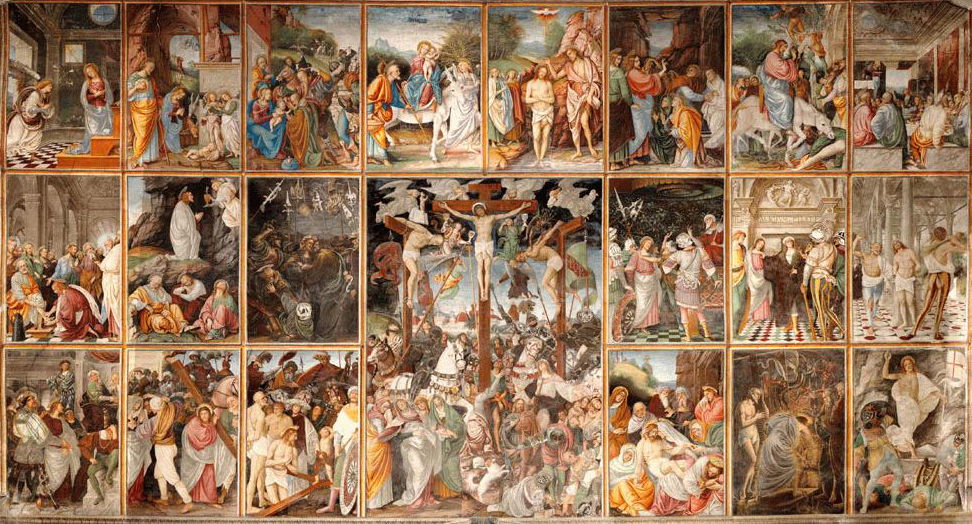
“That very day two of them were going to a village named Emmaus, about seven miles from Jerusalem, and they were talking with each other about all these things that had happened. While they were talking and discussing together, Jesus himself drew near and went with them. But their eyes were kept from recognizing him.
And he said to them, ‘What is this conversation that you are holding with each other as you walk?’ And they stood still, looking sad. Then one of them, named Cleopas, answered him, ‘Are you the only visitor to Jerusalem who does not know the things that have happened there in these days?’
And he said to them, ‘What things?’ And they said to him, ‘Concerning Jesus of Nazareth, a man who was a prophet mighty in deed and word before God and all the people, and how our chief priests and rulers delivered him up to be condemned to death, and crucified him. But we had hoped that he was the one to redeem Israel.’
‘Yes, and besides all this, it is now the third day since these things happened. Moreover, some women of our company amazed us. They were at the tomb early in the morning, and when they did not find his body, they came back saying that they had even seen a vision of angels, who said that he was alive. Some of those who were with us went to the tomb and found it just as the women had said, but him they did not see.’
And he said to them, ‘O foolish ones, and slow of heart to believe all that the prophets have spoken! Was it not necessary that the Christ should suffer these things and enter into his glory?’ And beginning with Moses and all the Prophets, he interpreted to them in all the Scriptures the things concerning himself ” (Luke 24:13-27 ESV).
Beginning with the Annunciation and sequentially progressing to the Resurrection, Gaudenzio Ferrari’s The Life of Christ (1513) artistically interprets to us the historical events concerning Jesus. The frames are read from left to right, along the rows from top to bottom. The crucifixion of Jesus is part of the bottom row.
Much like the two disciples who were troubled, saddened, and confused by the crucifixion of Jesus, we need to move beyond our pain and suffering and walk with Jesus in the power and strength of his resurrection. And much like sequentially progressing through the frames in the fresco above, our gaze needs to move beyond the cross and toward the empty tomb. But neither are we to stop to be forever buried in the tomb of doubt, despair, or discouragement. For as John Paul II once said, we are a Resurrection people and Alleluia is our song.
Alleluia! Christ is risen!
The Lord is risen indeed! Alleluia!
~ Boethius ~